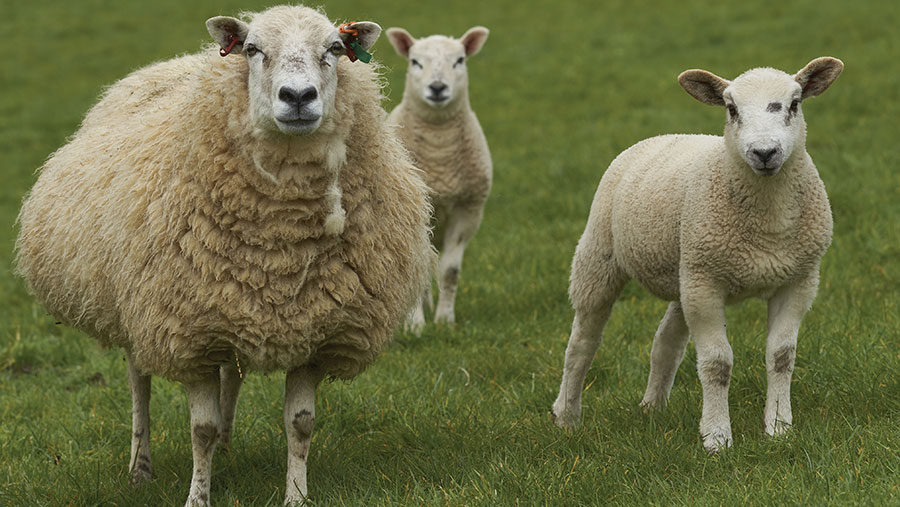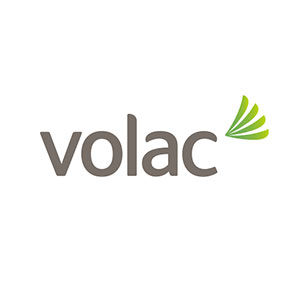Advice on managing lambs after weaning
 © Jeremy Richards/Adobe Stock
© Jeremy Richards/Adobe Stock High levels of lamb performance can be achieved post weaning with good grassland management and targeted feed supplementation, if needed.
With the lamb market holding strong, independent sheep specialist Liz Genever advises putting strategies in place now to achieve the best possible returns.
“Decisions on whether to supplement lambs to get higher weights, and get them off the farm earlier, need to be reviewed due to prolonged high lamb prices during the latter half of 2020 compared to the dip that normally happens in late summer,” she says.
Dr Genever gives advice on how to manage lambs after weaning.
See also: Heaviest lambs at weaning are leanest, study shows
Nutrition
Decisions on nutrition will be driven by pasture availability and lamb weights – if grass supply and quality are good and lambs are on target, supplementation may not be needed.
New reseeds or silage aftermath are ideal as they present a lower risk from parasites.
Lambs will already have the social stress of being removed from their mother, so good pasture and parasite management is needed to prevent further stress.
Grass
Specialty forage crops such as herbal leys and/or a red clover and plantain mix are good options for lambs too, but they can do well on grass and clover leys.
Avoid forcing lambs to graze residuals too low: if they are asked to work too hard, performance will be compromised.
Allow lambs to pick out the best bits and have another group – a lower-priority group such as shearlings or thinner ewes – to clean up after them.
Supplementary feed
Supplementary feeding must be properly costed, to ensure it is justified.
Decisions should mostly be based on long-term lamb price averages, but the past 12 months have shown there are exceptions, Dr Genever explains.
“In a normal year, the ambition is to see prices peak in June and July and that price will trail off as more lambs become available to sell, but last year prices kept powering on,” says Dr Genever.
She adds: “If it is likely that you will feed concentrates from October to December, consider moving that earlier to take advantage of better feed conversion efficiency of younger lambs.”
Feed about 300g a head a day if the aim is to push lambs to get them off the farm early: they will eat more if on an ad-lib system.
Mineralised concentrates can help deal with any minerals or trace elements deficiencies.
“There might be certain grazing fields on the farm that have a mineral deficiency – a mineralised concentrate is the best way of getting a bit of mineral into the lamb every day,’’ explains Dr Genever.
Grouping lambs
Grouping lambs at the point of weaning allows nutrition to be allocated accordingly.
The number of groups will depend on a farm’s target carcass weight.
Feeding strategy will also influence the number of groups – for instance, in rotational grazing systems, the number will depend on how many rotations are available.
“If lamb prices stay high, lambs tend to be selected at lighter weights – for example, liveweights of around 38kg,’’ she says.
Creating three groups is a good policy – 25kg or lower; 25-35kg, which Dr Genever describes as “getting there but not quite there”; and a group for lambs near target weight.
Grouping avoids the need to run all the lambs through the race when selecting for market or abattoir.
“The lambs that are not close to finishing weights can be kept in a separate group and not disturbed when rounding up for selecting,’’ says Dr Genever.
If there is a need to accommodate more groups, paddocks should be split accordingly.
Vaccinations
Lambs should have received a vaccination for clostridial diseases and pasteurella pre-weaning and that should protect them for the season.
There is some evidence that the pasteurella element of the vaccine might start to wane by September or October. Therefore, it might be necessary to inject lambs again.
“It will depend on when the first and second doses were given, but in earlier-lambing flocks, it might be advisable to give another dose in the autumn,” she says.
If farmers are unsure, they should speak to their vet.
Target weights and weighing
A target daily liveweight gain post weaning of 200-250g/day should be the ambition, Dr Genever recommends.
She cautions against weighing lambs too frequently owing to the fact weights can be distorted by gut fill and give an inaccurate recording.
If the first lamb to be weighed has eaten 2kg freshweight of feed, it will weigh 2kg more compared with the last lamb to be weighed in the same group.
This variation is mostly noticed when handling big numbers and there is a large time difference between weighing the first and last lambs.
Dr Genever suggests weighing lambs once a month as a rule of thumb. Although, this will depend on how a farm selects its lambs.
Weighing in conjunction with faecal egg counts also provides an opportunity to inform decisions around parasite management.
Mortality
Lamb mortality should be no higher than around 1-2% post weaning.
Recording deaths can help pinpoint diseases and inform what should be included as part of your flock health plan.
For example, it might flag up issues with the vaccination programme, or high worm burdens.
Thanks to Volac, whose sponsorship made it possible to run this article. Farmers Weekly had full editorial control of this report.
About Volac
 Thanks to a range of innovative Volac feeding equipment, surplus lambs can now be reared very successfully without all the inherent practical problems of fostering onto an unwilling ewe. And by correctly mixing and feeding 9 to 11 litres of Volac’s independently proven Lamlac ewe milk replacer from birth until weaning, you’ll produce good quality lambs, earn a decent margin over feed costs, as well as save hours of effort and hassle.
Thanks to a range of innovative Volac feeding equipment, surplus lambs can now be reared very successfully without all the inherent practical problems of fostering onto an unwilling ewe. And by correctly mixing and feeding 9 to 11 litres of Volac’s independently proven Lamlac ewe milk replacer from birth until weaning, you’ll produce good quality lambs, earn a decent margin over feed costs, as well as save hours of effort and hassle.
Lamlac – proven, market-leading performance for over 50 years.
